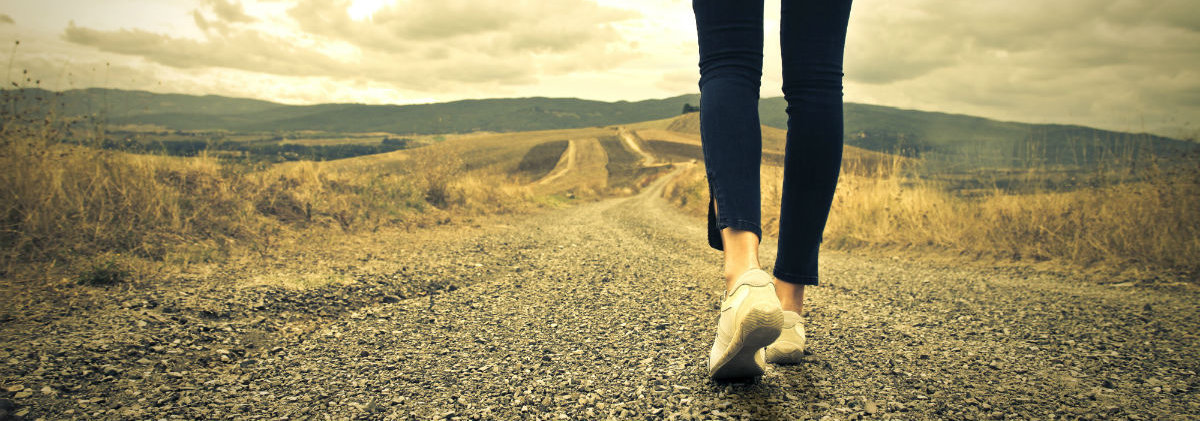
Some of us call it a good day if we walk to the refrigerator. Some of us call it a good day if we run a quarter marathon. We are all at different levels and exercise ought to be a personal experience. One thing that’s common across the U.S. is that many of us are too sedentary.
Withings, a fitness tracker producer, released data showing the walking results of their product around the world showing that Americans’ are less active than a lot of other countries. You can see this in the graph below. It shows the average number of steps US adults are taking during the day compared to France, Germany, and the U.K.
The health community encourages us to walk 10,000 steps – about five miles – per day. In America, adults take an average of 5,117 steps per day, which is only half of the recommended amount. Japan takes 7,168 steps, Switzerland 9,650 steps, and Australia 9,700 steps. So, other countries are falling short as well, but they are doing better than we are. Also, according to another study, men are actually winning this contest: men averaged 7,192 steps and women averaged 5,210 steps per day.
So, here are 5 points you need to know to get excited about walking and make those 10,000 steps count.
1. Walking Can Be Just As Good As Jogging
Walking counts. Often times we think we need to engage in the most intense workout routines conceivable or they won’t count. Depending on our goals, that may not be the case. According to American Heart Association Journal, 30 minutes of daily walking can be as effective at lowering blood pressure as some medications. Other simple everyday activities such as taking the stairs or engaging in vigorous yard or house work can help maintain health and wellness. Walking can even help decrease dementia, diabetes, heart disease, arthritis, and depression.
2. Walking Competitions
Because walking counts, many workplaces are starting walking competitions. It can be a fun way to keep each other accountable and keep the body going. Researchers at California State University decided to take it upon themselves to investigate the benefits of such a walking program. They wanted to know if a walking competition could decrease stress and increase physical activity levels, particularly in female employees at the university. They had earlier noted that stress levels were rising in female employees. They followed stress levels and walking days during the competition. They found that employees walked more and their stress levels decreased. Also, they found the competitors actually engaged in more vigorous physical activities.
So, walking can decrease stress and give you that little boost to dive into a more rigorous program.
3. Try Using A Weighted Vest On The Treadmill
It may sound strange at first, but research shows it works. James McCormick, a researcher at the University of New Mexico found that wearing a weighted vest while walking on the treadmill increases the quality of exercise without increasing the perceived exertion of the exercise. So, wearing a weighted vest gives better results without any more perceived effort.
James tested and tracked the effects on untrained women on treadmills, walking at various speeds and grades with different weight levels. This could be especially good practice for those just getting started on their path towards 10,000 steps or those with limited speeds.
4. Remember The Longevity Project
Way back in 1921, a great man started a great project. The man was Dr. Lewis Terman, at Stanford University started “The Longevity Project“. It would track 1,500 boys and girls over most of the next century to see which traits lead to the longest life. Terman passed away in 1956, but Dr. Howard Friedman and Dr. Leslie Martin would continue the project to its end and ultimately publish all of its fascinating details in a book named after the study.
Their findings were many, but they found some particularly interesting ones regarding exercise and health. It found those that engaged in activities they enjoyed lived the longest. Indeed, if longevity is the goal, the researchers actually rejected the mantra of rigorous exercise as being key and instead suggested being active doing something you enjoy.
“All in all, the findings told us that it makes no sense to rely on generalizations – individuals, we found, are on their own activity paths. The edict to exercise rigorously needs to be altered and tailored person to person.”
That said, Dr. Martin did run a six-day race across 150 miles of the Moroccan desert, so it’s no problem to enjoy an extreme race every now and then. But that may not be what has the biggest positive impact on your longevity.
It isn’t too late for sedentary adults to apply a little change that makes a big difference. Even in middle-aged adults, if you can add one minor activity to your day that you enjoy, you can make a large impact on the trajectory of the remainder of your life. When trying to understand the difference between going for a daily walk and doing nothing at all, Friedman says, “We’re really talking here about the difference between people who become sick and die in their 50s and 60s versus those who thrive into their 70s, 80s, and 90s.”
5. Take The Every Body Walk! Pledge
People all across the country are jumping on board to get on the path to good health. As you can tell, a little bit of walking adds up to make a big difference. Every Body Walk! is encouraging everyone to take a pledge to walk at least a total of 30 minutes a day.
“Walking has a huge impact. It makes people healthier. It makes medications work better. It makes people happier. And the effects are immediate—you’ll feel better after a few months of walking.”
– George Halvorson, former CEO of Kaiser-Permanente
“Research shows that walking can give you seven more years of life. The health benefits of walking are so overwhelming that to deny access to that is a violation of fundamental human rights.”
– Robert Bullard, 2015 National Walking Summit.
“As well as improving health, the value of walking reaches across many different issues — social equity, local economic vitality, a stronger sense of community, improved student performance.”
– Tyler Norris, former Kaiser Permanente Vice-President of Total Health
So, take the pledge with Every Body Walk! And make your goal of 10,000 steps, whether it’s on the treadmill, on the street, or on the trail!
DISCLAIMER: This post is not intended to replace the advice of a medical professional. The above information should not be used to diagnose, treat, or prevent any disease or medical condition. Please consult your doctor before making any changes to your diet, sleep methods, daily activity, or fitness routine. NordicTrack assumes no responsibility for any personal injury or damage sustained by any recommendations, opinions, or advice given in this article.
Sources:
https://blog.withings.com/2014/09/05/which-is-the-most-active-country/
https://www.verywell.com/whats-typical-for-average-daily-steps-3435736
https://www.ahajournals.org/doi/abs/10.1161/HYPERTENSIONAHA.118.12373
https://digitalrepository.unm.edu/educ_hess_etds/58/
https://www.nytimes.com/2011/04/19/science/19longevity_excerpt.html


